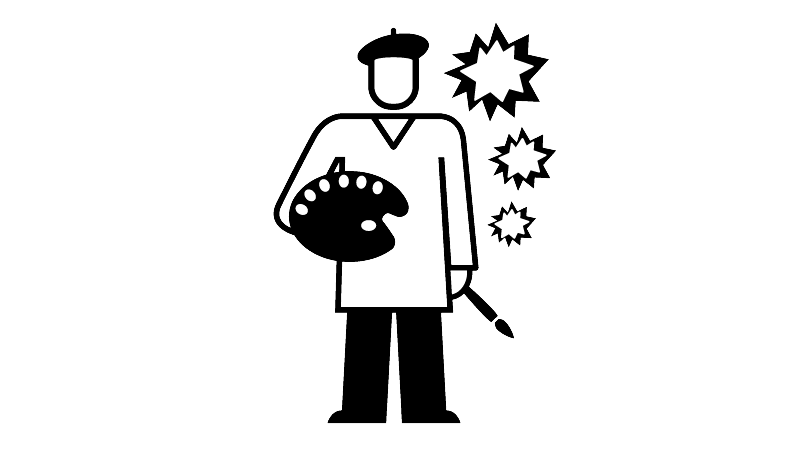Games
Visual effects (VFX) artist
Also known as: Effects (FX) artist, Special effects (SFX) artist

What does a visual effects (VFX) artist do?
VFX artists add the wham, bam, crash and wallop to games. They create anything that moves that isn’t a character or an object. They create dust, water, explosions and superpowers. VFX artists use digital art software, alongside traditional art insights to create realistic effects that are stunning, like a tornado, or subtle, like slow moving clouds.
Watch
What’s a VFX artist good at?
- Art: understand composition, colour, texture, and light, and know how these elements work together
- Physics and advanced maths: understand how elements like water, light and dust behave in different conditions
- Using software and games engines: create artwork using a range of programmes and physics software packages, know the technical capability of the game engine and the latest technologies and techniques
- Collaboration: work with the other artists, share the vision with designers and games developers
- Time management: work on projects to tight deadlines, prioritise tasks. VFX is often expensive so it’s necessary to know how to work within budget
Who does a VFX artist work with?
VFX artists work with all the other members of the art department – the concept artist, the modelling artist and the texturing artist and so on. They usually report to the art director.
How do I become a VFX artist?
This is a technical role and isn’t usually entry-level. Most VFX artists have had several years’ experience as games artists before specialising in effects. Typically, the route to VFX is though being a compositor, rotoscope artist, match mover, or in another area of motion graphics and game art. Some have worked in VFX studios for film and TV and gone into games VFX from there.
Look at the generalist programmer job profile or the animation job profile for details of how to get into the games industry through these routes.
At school or college:
This is one of a number of roles within the games industry where it’s necessary to have skills in both art and sciences. While at school or college, try to combine them.
If you want to go to university, it’s important to get A-levels, Highers or a BTEC in one or two of the following:
- Maths
- Physics
- Computer science
- BTEC Diploma in Computing
Then you will need to add some art-based Level 3 qualifications to the mix.
- A-level or Higher art and design
- A-level or Higher in graphic design or graphic communication
- BTEC Diploma in Art and Design
- UAL Diploma in Art and Design
- BTEC Diploma in Graphics
- OCR Cambridge Technical Diploma in Art and Design (Graphic Design)
Build a portfolio:
Learn the software, experiment with games engines and start creating work that you can show to admissions tutors or employers. This is essential. Go to Build your games portfolio to learn how.
Get a degree:
Most people in the games industry have got a degree and you might want to be one of them. Have a look at ScreenSkills’ list of recommended courses in VFX. We recognise courses with our ScreenSkills Select award where they offer training in the relevant software, dedicated time to building a portfolio and have strong links with the games industry.
Network:
Get to know people in the games industry by attending events, including games conferences and expos. Meet professionals and ask them questions about their work, while demonstrating interest and knowledge in the industry. Offer to provide them with your professional contact details and try to stay in touch with them. Go to Network well to learn how to do this.
Search for jobs:
Use the UK Games Map to find out if there are games companies near you, then go to their websites directly and check out their open roles. You could also check out ScreenSkills jobs board. Look for entry-level roles as an animator, junior artist or generalist programmer and work your way into visual effects from there.
Look outside games:
There are a growing number of opportunities for VFX artists in VFX studios. Build up skills there that you can transfer into games.
You might also be interested in…
Being a lead games designer, level designer, 3D modelling artist, an environment artist or a technical artist in the games industry. You might also be interested in being a previsualisation (previs) artist, modelling artist, texture artist or an environment artist in VFX, or a modeller or background designer in the animation industry.







